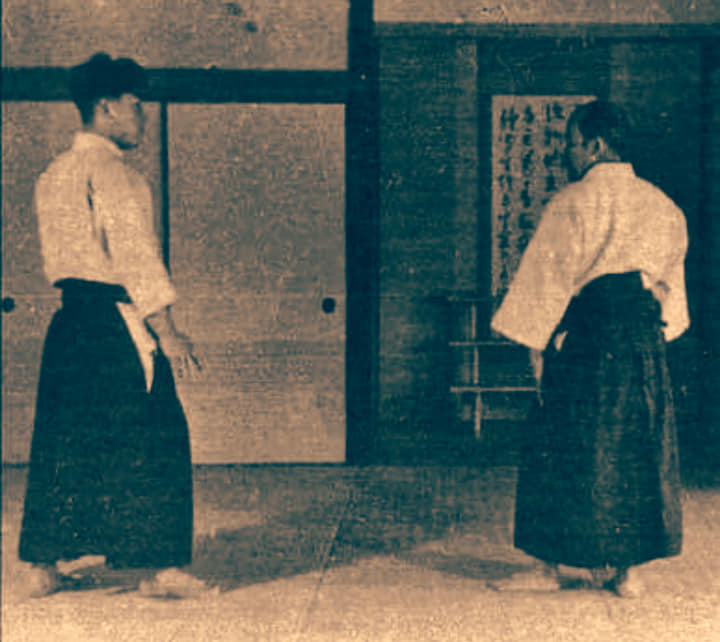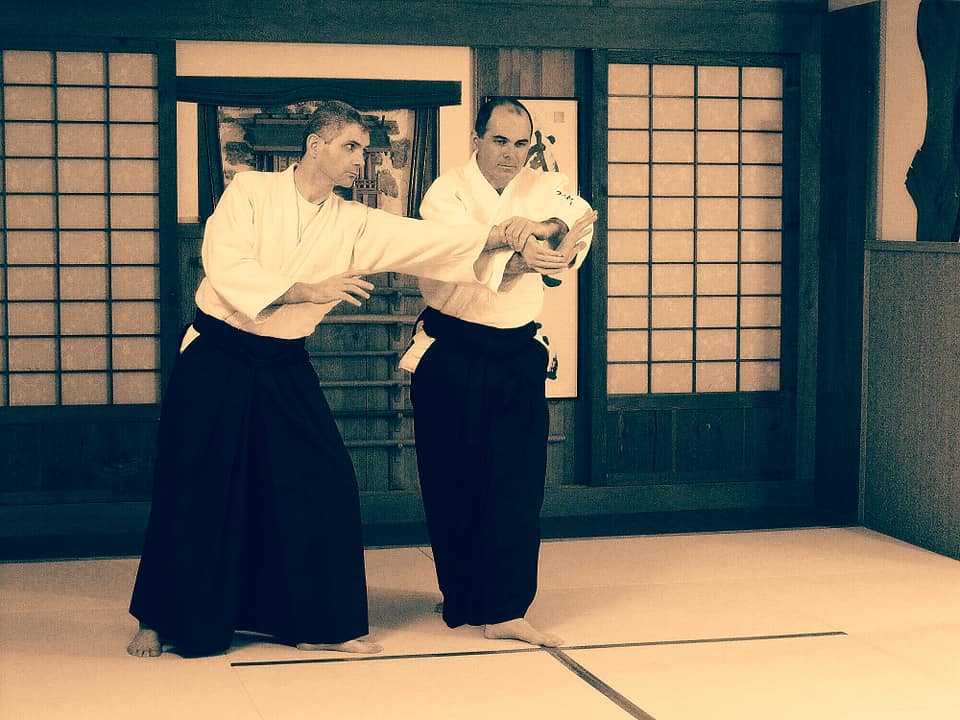In the late 1930s, Morihei began planning to build a dojo in Iwama. Mitsunosuke Akazawa helped him acquire the land and construction began around 1939.
In 1938, Zenzaburo Akazawa was sent to Manchuria as an assistant to General Toshinari Maeda. Upon his return to Japan, he accompanied Ueshiba during his teaching at various military institutions. Eventually, Zenzaburo will spend three years at sea as a soldier. From 1943 until the surrender of Japan, he taught aikido as a military discipline at the Naval Academy.
After the war, he returned to Iwama and supported Morihei’s activities within the dojo and the construction of the Aiki jinja (Aiki Shrine). In 1962, Morihei Ueshiba awarded him the sixth dan. Gradually after the war, Zenzaburo limited his aikido activities and devoted himself only to Omoto kyo.

GOZO SHIODA SAID ABOUT ZENZABURO
“One day, a famous judoka from Kodokan (probably the fourth dan) visited Kobukan to test his abilities. First he was faced by Yukawa, one of the best in Kobukan and also the third dan of Kodokan. Facing this well-known warrior, however, his judoka awoke in Yukava and, as a lower rank in Judah, was unable to defeat him.
This was followed by Zenzaburo Akazawa, my senpai, who had no experience with judo and his daily training consisted mainly of shihonage. As soon as this judoka wanted to catch him, Akazawa did a wonderful shihonage and took away his elbow. The judoka was not even able to do ukemi.”
When Stanley Pranin visited Zenzaburo Akazawa in Iwama, he discovered Morihei Ueshiba’s 1938 technical manual called Budo.
He had never heard of such a publication before, so he borrowed it and went to show it to Morihiro Saito. Surprisingly, he also did not know about this book, but considered it proof that the techniques he teaches are Ueshibu’s techniques and he often used it during his teachings in Iwama and abroad.
Source: Facebook/Aikido



